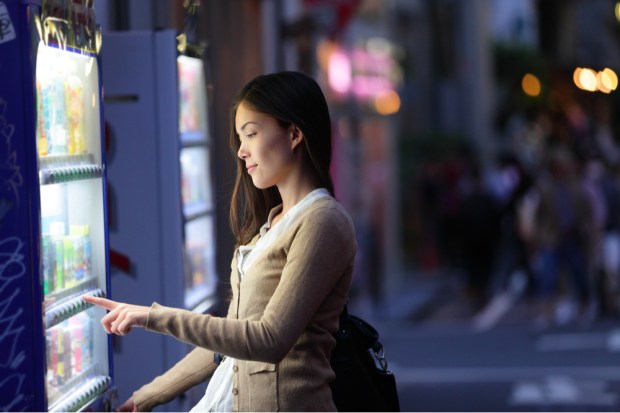Why Brick-And-Mortar Needs Unattended Retail

As recently as a few years ago, it was often difficult to get retailers to think seriously about unattended retail as an expansion or extension of their business. They were still too tied to the original concept of one-off, standalone vending machines for food and beverage items, so the relevance and potential wasn’t obvious quite yet.
But a few years can make a big difference, USA Technologies’ President and CEO Don Layden Jr. told Karen Webster in a recent interview — particularly when consumer behavior undergoes some major transformations in that time. As consumers have become more digital- and eCommerce-centric, they’ve become accustomed to fast, efficient self-service transactions, and have come to expect them from all of their shopping experiences.
“Consumers have made different choices about how they want to shop. They want to spend their leisure time doing other things, and that is especially true of the bridge millennial groups that are fiercely protective of their time and don’t want to see any of it wasted,” Layden said.
That shift in consumer preferences is driving an ever-expanding digitization of the physical retail experience, he noted. It’s a shift that is observable in the Amazon Go stores, quick-service restaurants (QSR) ordering kiosks and the veritable wave of app-based order-ahead services that have popped up to meet consumers’ need for speed and efficiency, and their desire for their physical retail journeys to more closely resemble their online experiences.
It’s a trend that USA Technologies is uniquely suited to capitalize on, with its modern, connected and interactive form of unattended retail technology services, Layden Jr. said. And they are seeing a growing interest from merchants, as it becomes clear that those who can’t offer these kinds of seamless commerce experiences will soon be displaced by those that can.
The Wider-Than-Expected Applications Of Unattended Retail
Vending machines of various types — from those offering simple cans of soda to those containing luxury apparel and jewelry items — are often the first association when one thinks of unattended retail. While that is a growth area, Layden Jr. said, there is a wider world of applications that don’t quite fit that mold.
Store-within-a-store concepts is one example they are seeing more often, he told Webster, citing health and beauty products like razor blades that often end up in locked cabinets behind store staff.
“It is the most frustrating experience in the world, because it is behind a cabinet, so now the customer has to find an attendant, experience friction in creating interaction they don’t want to have, get their goods and then still have to wait in line to make the purchase,” Layden Jr. noted. “Our retail capabilities would allow that transaction to take place without friction, as the customer could take their razors from a kiosk and be on their way.”
In fact, he noted, that logic can be applied to the contents of an average convenience store, where most of the transactions require almost no interaction from a clerk — and consumers would rather save the time the interaction requires.
And beyond goods, services is an area where USA Technologies believes there is “a tremendous amount of growth embedded,” from areas like laundromats to service stations where consumers are looking to top off their tires or get a car wash.
The applications are emerging on the back of a technological advancement, Layden, Jr. noted, but the idea that is pushing all of this forward is as old as retail itself.
“The retail mantra is really pretty simple: frequency, recency and basket size,” he said. “Unattended retail can increase that average basket size, because people are more likely to spend in a place where there’s no barrier and the transaction is frictionless.”
What’s Next
Once upon a time not so very long ago, Layden, Jr. noted, the average laundromat had an attendant to make change for the machines and hand out detergent. The average fill-up at a gas station involved someone else putting gas in the consumer’s tank. Today, while one can find those two things (particularly gas pumping, as in New Jersey and Oregon, self-service is illegal), they are both comparatively rare. Two decades into digital commerce, they are simply out of step with consumers’ wants.
“Customers have gotten very used to shopping online and doing as many things as they can self-service,” Layden, Jr. said. There are still things that physical do better — consumers often like to physically see goods before purchasing them, particularly if they are expensive. That is where self-service (when done well) can fill an important gap, combining the comfort of viewing with the possibility of an immediate, seamless purchase.
And it can fill the gap in an increasingly large number of places, Layden, Jr. noted.
“Consumers know that transacting ought to be frictionless, and that is a lot of what unattended retail can do,” he said. “I think what we’re going to see over time, is that a number of locations that are currently attended retail will be turned inside-out in terms of their orientation toward unattended retail.”
